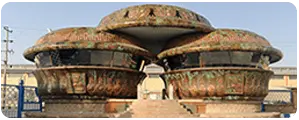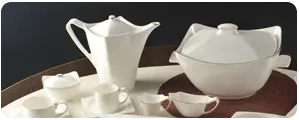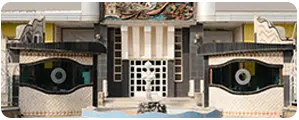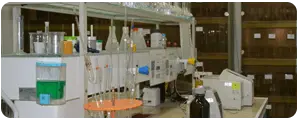Porcelain: A Brief History, Production, and Uses of the Versatile Ceramic
Introduction:
Porcelain is a ceramic material that has been highly valued throughout history for its beauty, strength, and versatility. It has been used in a wide range of applications, from creating fine art to producing everyday objects like dishes and tiles. In this article, we will explore the history of porcelain, how it is made, and some of its most common uses.
History:
Porcelain was first developed in China during the Tang Dynasty (618-907 AD), but it wasn't until the Ming Dynasty (1368-1644 AD) that it became widely known. The Chinese were able to create porcelain by firing a mixture of kaolin and petuntse at high temperatures, resulting in a hard, white, translucent material that was highly prized for its beauty and durability. For centuries, the Chinese kept the secret of porcelain production to themselves, and it wasn't until the 18th century that Europeans were able to replicate the process.
Production:
Porcelain is made from a mixture of kaolin, feldspar, and quartz, which is fired at high temperatures to produce a hard, durable material. The process involves several steps, including mixing the raw materials, forming the porcelain into a desired shape, firing it in a kiln at high temperatures, and then glazing and re-firing it. The exact process can vary depending on the desired outcome, but the basic principles of porcelain production remain the same.
Uses:
Porcelain has been used in a wide range of applications throughout history. In China, it was used to create fine art objects like vases and figurines, as well as everyday items like dishes and tiles. In Europe, porcelain became popular as a material for creating high-end dishware, as well as decorative objects like figurines and sculptures. Today, porcelain is still used in these applications, as well as in modern applications like electrical insulators and dental implants.
In addition to its traditional uses in art, dishware, and decorative objects, porcelain has several modern applications. One of the most important of these is in the field of dentistry. Porcelain is used to create dental implants, which are artificial teeth that are permanently fixed in the mouth to replace missing teeth. Porcelain's strength, durability, and biocompatibility make it an ideal material for this application.
Porcelain is also used as an electrical insulator due to its high dielectric strength, which makes it an excellent material for electrical components such as spark plugs, capacitors, and high-voltage insulators. Porcelain insulators are also commonly used in power transmission lines and substations.
Another modern application of porcelain is in the production of tiles and building materials. Porcelain tiles are highly durable and resistant to moisture and stains, making them a popular choice for flooring and wall coverings. Porcelain is also used to produce bathroom fixtures like sinks, toilets, and bathtubs due to its durability and resistance to moisture.
Overall, porcelain's unique properties have made it a versatile material with a wide range of modern applications in industries such as dentistry, electrical engineering, and construction.
Conclusion:
Porcelain is a versatile material that has been prized for its beauty, durability, and versatility for centuries. Its history is rich and fascinating, and its production process remains a closely-guarded secret in some parts of the world. Whether it is used to create fine art or everyday objects, porcelain continues to be a material of choice for those who value its unique properties and beauty.
 Maghsoud Porcelain Manufacturing Complex was officially opened on March 1993 with the participation of National Bank (Bank Melli) of Iran investment Company and Union of Government Employees (SCAD) with annual nominal capacity (3,000 tons).
Maghsoud Porcelain Manufacturing Complex was officially opened on March 1993 with the participation of National Bank (Bank Melli) of Iran investment Company and Union of Government Employees (SCAD) with annual nominal capacity (3,000 tons).

 DORSA Company as the largest spoon and fork manufacturer in the country, using lean production methods, produces products in accordance with the quality of the Solingen brand Germany Company with a capacity of 3 million items per month in three shifts. This company can produce the product in four different ways of mirror polishing, sandblasting, gold rim (round), and matte using the finest stainless steel 304.
DORSA Company as the largest spoon and fork manufacturer in the country, using lean production methods, produces products in accordance with the quality of the Solingen brand Germany Company with a capacity of 3 million items per month in three shifts. This company can produce the product in four different ways of mirror polishing, sandblasting, gold rim (round), and matte using the finest stainless steel 304. Azin Ghaleb Jam Company in 2005 was the founder of the most specialized unit for manufacturing glass molds with high precision and efficiency in the country aimed at producing glass molds and using the most modern state-of-the-art CNC machines in the world, including DMG Germany, etc., as well as utilizing specialized and capable engineers in this field.
Azin Ghaleb Jam Company in 2005 was the founder of the most specialized unit for manufacturing glass molds with high precision and efficiency in the country aimed at producing glass molds and using the most modern state-of-the-art CNC machines in the world, including DMG Germany, etc., as well as utilizing specialized and capable engineers in this field. Gol Naghsh Toos Company, since 2006, has been working with a nominal annual capacity of producing and printing about 1500000 sheets of different types of decals for Porcelain, Opal Glass, and Pyrex, Tile, and Heater products..
Gol Naghsh Toos Company, since 2006, has been working with a nominal annual capacity of producing and printing about 1500000 sheets of different types of decals for Porcelain, Opal Glass, and Pyrex, Tile, and Heater products..




بدون دیدگاه